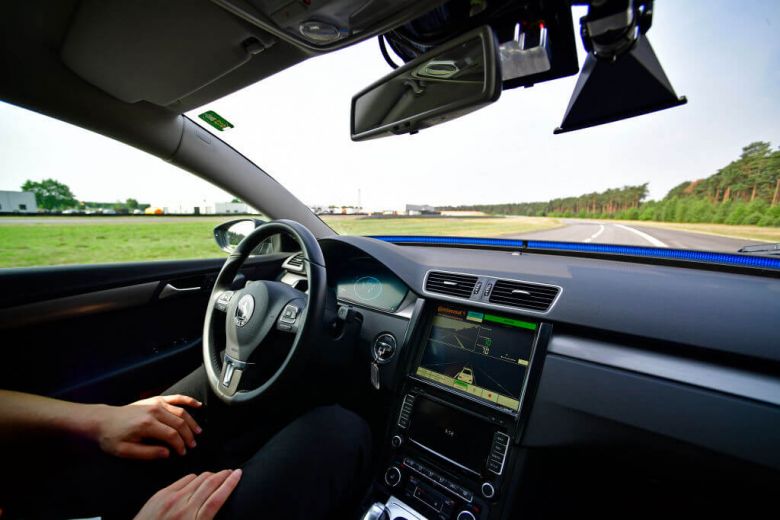The planned updates, announced following a public consultation, are being used to prepare the public for the arrival of vehicles with more autonomous features.
Following the consultation, the new plans include allowing drivers to view content that is not related to driving on built-in display screens while the vehicle is in control – which could include watching television or checking emails.
However, it will still be illegal to use handheld mobile phones while behind the wheel.
The Government said that it is continuing to develop a full legal framework for 'self-driving' vehicles to enable the safer and greener movement of people and goods in the UK. Further announcements are scheduled for later this year, with the framework expected to be in place by 2025.
Transport Minister Trudy Harrison said: “This is a major milestone in our safe introduction of self-driving vehicles, which will revolutionise the way we travel, making our future journeys greener, safer, and more reliable.
“This exciting technology is developing at pace right here in Great Britain and we’re ensuring we have strong foundations in place for drivers when it takes to our roads.”
Earlier this year, a joint report by the Law Commission of England and Wales and the Scottish Law Commission recommended legal reforms that would see 'self driving' car users exempt from prosecution in the event of a crash where the automated functionality was at fault.
What does the government class as a ‘self driving’ vehicle?
Currently, there are no 'self-driving' or ‘driverless’ cars listed for use. This is because existing technology is classed as ‘assistive’, meaning drivers must always remain in control and responsible of the vehicle when behind the wheel.
However, last year the Government announced that vehicles fitted with automated lane keeping system (ALKS) technology could be allowed on the roads.
Designed for use on a motorway in slow traffic, ALKS enables a vehicle to drive itself in a single lane, up to 37 mph, while maintaining the ability to return control easily to the driver when required.
Following the consultation, the Government announced that a clear set of instructions for drivers would be issued, where they would have a set of rules for driving while in ‘self-driving mode’. This will largely focus on when a driver should resume control of the vehicle.
Although there is no set date for the changes to come into place, it is being reported that it will be before the end of 2022.
The RAC has compiled a list of the most Googled questions relating to driverless cars – and here are the answers.
READ: In-car infotainment systems slow reaction times more than drink and drugs
In response to the Highway Code changes, the RAC’s head of policy Nicholas Lyes said: "Automated vehicle technology has the potential to make our roads safer by eradicating driver-induced errors – a cause of a great many collisions – and could also make lengthier trips a more enjoyable and less tiring experience. While we’re still some way off truly ‘self-driving’ cars, the journey to get there begins with driver assistance technologies such as automated lane keeping systems, as they’re only focussed on one element of driving.
"It’s vital the Highway Code changes covering automated vehicle technology are crystal clear, setting out exactly what drivers can and can’t do when certain features are engaged otherwise there’s a very real risk that drivers will be confused. This itself could lead to avoidable road traffic collisions – especially if a driver hasn’t taken back control of the vehicle after they’ve been told to."
Like with the introduction of most new technologies, it will be vital that drivers understand fully what a car will be capable of doing itself – and under what conditions they might need to resume control.
Lyes continued: "Educating drivers about how they can and can’t use the technology shouldn’t stop with the Highway Code. The concept of a car doing the driving will be an alien one to the vast majority of people, not least because until now it’s been a legal requirement for drivers to always be in proper control of their vehicles.
"A huge effort is therefore required by both industry and the Government to ensure drivers trust and understand their vehicles’ automated driving technology. Many people will be highly sceptical and may not trust their vehicles to do some of the driving for them. And even if they’re permitted to take their eyes off the road, just how many drivers will actually choose to, and feel safe doing so?"
Do you think ‘driverless cars’ will be a good introduction to UK roads? Leave your comment below.

RAC sale – up to 33% off*
• Roadside cover from £5.29 a month†
• We get to most breakdowns in 60 mins or less
• Our patrols fix 4/5 breakdowns on the spot











